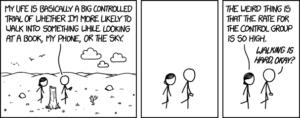Ice-bucket spin
The ‘ice-bucket’ challenge was intended to raise awareness of the disease ALS and to raise research funds. Part of this money funded genetic research, and here’s how Stuff describes it, under the headline Ice bucket challenge credited with a medical breakthrough
Researchers have just announced a medical breakthrough. Thanks to the challenge they have identified a gene found to be one of the most common in people with ALS, the deadly disease that affects neurons in the brain and spinal cord.
One News was similarly enthusiastic: Researchers have discovered an important gene linked to Motor Neurone Disease, and it’s all thanks to last year’s viral Ice Bucket Challenge. The story goes on to describe this as ‘paving the way for future treatment’.
Newshub is a little better
Scientists have discovered a gene variant associated with the condition, which means therapies can be individually targeted.
They say it means they’re significantly closer to finding an effective treatment for the disease, which causes progressive muscle degeneration.
The researchers themselves were more restrained:
NEK1 has been previously described as a candidate gene for ALS. Here our findings show that NEK1 in fact constitutes a major ALS-associated gene with risk variants present in ~3% of European and European-American ALS cases.
That is, it’s not new that variants in NEK1 are associated with ALS, and what the research did was confirm this and quantify the extent of association: about 3% of ALS cases have such a variant.
There’s nothing wrong with the research; this sort of incremental step is how science mostly works, and every bit of information helps when you’ve got a disease with no current cure and a poorly-understood cause. But it’s not a medical breakthrough even for the 3% who have these variants, and there’s no paved road to future treatment.
HealthNewsReview has a longer rant.




Recent comments